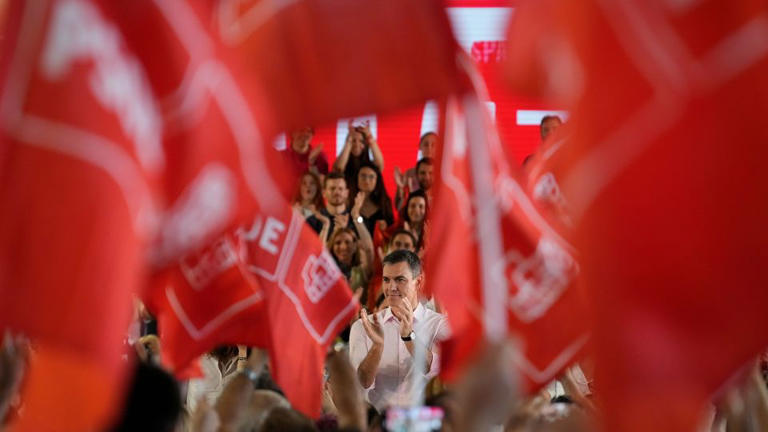New material could hold key to reducing energy consumption in computers and electronics
University of Minnesota researchers create thin film of unique semimetal for the first time
IMAGE: A UNIVERSITY OF MINNESOTA TWIN CITIES TEAM HAS, FOR THE FIRST TIME, SYNTHESIZED A THIN FILM OF A UNIQUE TOPOLOGICAL SEMIMETAL MATERIAL THAT HAS THE POTENTIAL TO GENERATE MORE POWER AND MEMORY STORAGE IN COMPUTER CHIPS WHILE USING SIGNIFICANTLY LESS ENERGY. view more
CREDIT: ISTOCK
A University of Minnesota Twin Cities team has, for the first time, synthesized a thin film of a unique topological semimetal material that has the potential to generate more computing power and memory storage while using significantly less energy. The researchers were also able to closely study the material, leading to some important findings about the physics behind its unique properties.
The study is published in Nature Communications, a peer-reviewed scientific journal that covers the natural sciences and engineering.
As evidenced by the United States’ recent CHIPS and Science Act, there is a growing need to increase semiconductor manufacturing and support research that goes into developing the materials that power electronic devices everywhere. While traditional semiconductors are the technology behind most of today’s computer chips, scientists and engineers are always looking for new materials that can generate more power with less energy to make electronics better, smaller, and more efficient.
One such candidate for these new and improved computer chips is a class of quantum materials called topological semimetals. The electrons in these materials behave in different ways, giving the materials unique properties that typical insulators and metals used in electronic devices do not have. For this reason, they are being explored for use in spintronic devices, an alternative to traditional semiconductor devices that leverage the spin of electrons rather than the electrical charge to store data and process information.
In this new study, an interdisciplinary team of University of Minnesota researchers were able to successfully synthesize such a material as a thin film—and prove that it has the potential for high performance with low energy consumption.
“This research shows for the first time that you can transition from a weak topological insulator to a topological semimetal using a magnetic doping strategy,” said Jian-Ping Wang, a senior author of the paper and a Distinguished McKnight University Professor and Robert F. Hartmann Chair in the University of Minnesota Department of Electrical and Computer Engineering. “We’re looking for ways to extend the lifetimes for our electrical devices and at the same time lower the energy consumption, and we’re trying to do that in non-traditional, out-of-the-box ways.”
Researchers have been working on topological materials for years, but the University of Minnesota team is the first to use a patented, industry-compatible sputtering process to create this semimetal in a thin film format. Because their process is industry compatible, Wang said, the technology can be more easily adopted and used for manufacturing real-world devices.
“Every day in our lives, we use electronic devices, from our cell phones to dishwashers to microwaves. They all use chips. Everything consumes energy,” said Andre Mkhoyan, a senior author of the paper and Ray D. and Mary T. Johnson Chair and Professor in the University of Minnesota Department of Chemical Engineering and Materials Science. “The question is, how do we minimize that energy consumption? This research is a step in that direction. We are coming up with a new class of materials with similar or often better performance, but using much less energy.”
Because the researchers fabricated such a high-quality material, they were also able to closely analyze its properties and what makes it so unique.
“One of the main contributions of this work from a physics point of view is that we were able to study some of this material’s most fundamental properties,” said Tony Low, a senior author of the paper and the Paul Palmberg Associate Professor in the University of Minnesota Department of Electrical and Computer Engineering. “Normally, when you apply a magnetic field, the longitudinal resistance of a material will increase, but in this particular topological material, we have predicted that it would decrease. We were able to corroborate our theory to the measured transport data and confirm that there is indeed a negative resistance.”
Low, Mkhoyan, and Wang have been working together for more than a decade on topological materials for next generation electronic devices and systems—this research wouldn’t have been possible without combining their respective expertise in theory and computation, material growth and characterization, and device fabrication.
“It not only takes an inspiring vision but also great patience across the four disciplines and a dedicated group of team members to work on such an important but challenging topic, which will potentially enable the transition of the technology from lab to industry,” Wang said.
In addition to Low, Mkhoyan, and Wang, the research team included University of Minnesota Department of Electrical and Computer Engineering researchers Delin Zhang, Wei Jiang, Onri Benally, Zach Cresswell, Yihong Fan, Yang Lv, and Przemyslaw Swatek; Department of Chemical Engineering and Materials Science researcher Hwanhui Yun; Department of Physics and Astronomy researcher Thomas Peterson; and University of Minnesota Characterization Facility researchers Guichuan Yu and Javier Barriocanal.
This research is supported by SMART, one of seven centers of nCORE, a Semiconductor Research Corporation program, sponsored by National Institute of Standards and Technology (NIST). T.P. and D.Z. were partly supported by ASCENT, one of six centers of JUMP, a Semiconductor Research Corporation program that is sponsored by MARCO and DARPA. This work was partially supported by the University of Minnesota’s Materials Research Science and Engineering Center (MRSEC) program under award number DMR-2011401 (Seed). Parts of this work were carried out in the Characterization Facility of the University of Minnesota Twin Cities, which receives partial support from the National Science Foundation through the MRSEC (Award NumberDMR-2011401). Portions of this work were conducted in the Minnesota Nano Center, which is supported by the NSF Nano Coordinated Infrastructure Network (NNCI) under Award Number ECCS-2025124.
JOURNAL
Nature Communications
METHOD OF RESEARCH
Experimental study
ARTICLE TITLE
Robust negative longitudinal magnetoresistance and spin–orbit torque in sputtered Pt3Sn and Pt3SnxFe1-x topological semimetal
ARTICLE PUBLICATION DATE
12-Jul-2023















